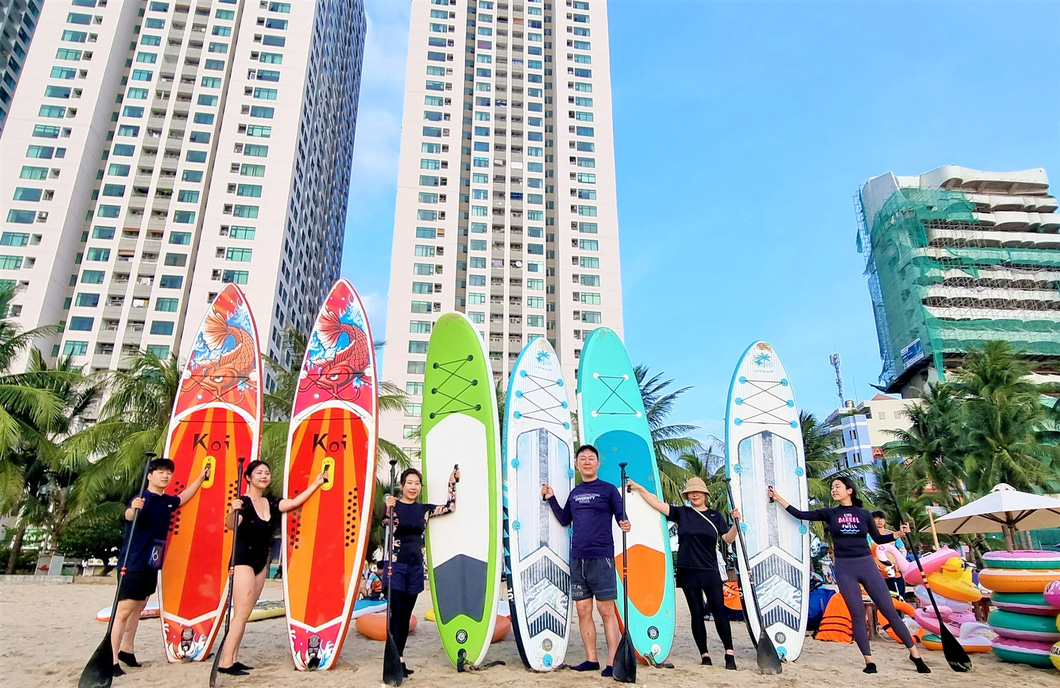Despite Vietnam reopening international air routes, local air carriers have yet to recover to pre-pandemic levels due to falling demand and the country’s ineffective policies.
Leaders of many local airlines said visa policies are a hindrance to the sector’s recovery.
According to Ho Ngoc Yen Phuong, vice-president of Vietnam’s low-cost airline Vietjet, the aviation sector is facing a liquidity decline and rising operation costs.
The domestic aviation market has recovered but no firm has reported a profit.
Meanwhile, international airlines have recorded profits mainly because Vietnam reopened its doors to international travelers earlier than regional countries, such as Thailand and Malaysia.
Vietnamese airlines admitted that their revenue was not enough to offset costs.
Despite a high frequency of domestic flights, their economic efficiency is low and unsustainable.
General director of national flag carrier Vietravel Airlines Vu Duc Bien once said that “Vietnam Airlines is like a bird without feathers after the pandemic."
The situation worsened when China announced a list of 20 countries and territories where its tour agencies were allowed to take travelers, including seven ASEAN countries, but Vietnam was excluded.
Another airline leader said frankly that he craved for some other countries’ passenger attraction policies.
Vietnam’s policies, especially visa ones, constitute a big bottleneck. They are not too different from those applied during the pandemic.
“It seems that Vietnam has yet to return to a 'new normal',” Vietravel Airlines general director Bien said.
According to Trinh Ngoc Thanh, deputy general director of Vietnam Airlines, other regional countries have done better than Vietnam in visa policies, the investment in international tourism promotion, and the reconnection with China.
“The international segment accounts for 40 percent of the passengers of Vietnamese air carriers but contributes over 60 percent to their revenue and profits,” Thanh said.
He added that no national-level tourism promotion program has been conducted. Meanwhile, travel companies are out of money and cannot organize tourism promotion programs themselves anymore.
“The government should also seek ways to recover tourism relations with China, which contribute 30 percent [of Vietnam’s total tourism revenue],” Thanh proposed.
Local aviation enterprises agreed that difficulties in applying for visas to Vietnam have made international tourists shift to tours to Thailand and Singapore.
Rivals have turned Vietnam’s limitations into their competitive advantages in the race to lure international travelers.
Nguyen Manh Quan, general director of Bamboo Airways, said the aviation sector’s efforts are not enough as visa policies remain a bottleneck.
The government should make visa policies favorable for foreign travelers, such as extending the visa waiver period and adding more countries and territories to the visa-free list.
In addition, infrastructure facilities at local airports, especially Tan Son Nhat International Airport in Ho Chi Minh City, have raised concerns.
Moreover, long queues at check-in counters and the lack of fingerprint and facial recognition systems have been common complaints of international visitors.
Thu An, director of a tech subsidiary of a foreign group, said the completion of immigration procedures at Thailand’s airports is convenient with employees’ assistance and biometric authentication technology.
Meanwhile, at Tan Son Nhat International Airport, passengers sometimes have to wait for over an hour each to take turns completing check-in procedures.
“Vietnamese people are also tired [of procedures at domestic airports], let alone international passengers,” An said.
According to Tran Quoc Khanh, chairman of the Kien Giang Tourism Association, the namesake southern province, which is home to well-known Phu Quoc Island, has welcomed a lower-than-expected number of foreign travelers since early this year, equivalent to 45 percent of the figures in previous years.
The numbers of Russian and Chinese tourists remain small.
To attract international tourists, Khanh said the province needs to train tourism human resources and improve its traffic infrastructure. Moreover, the visa waiver period should be extended to prolong international visitors’ stay.
The provincial People’s Committee has recently proposed the government apply the visa waiver policy to more countries to create conditions for Kien Giang to attract more international passengers.
Meanwhile, the provincial Department of Tourism suggested that international travelers coming to Phu Quoc can visit islands in Ha Tien City as well as Kien Luong and Kien Hai Districts.
In addition, airlines should open new air routes connecting Vietnam and other markets.
It is also needed to invest in seaports and inland waterway ports to develop waterway tourism.
Like us on Facebook or follow us on Twitter to get the latest news about Vietnam!















































